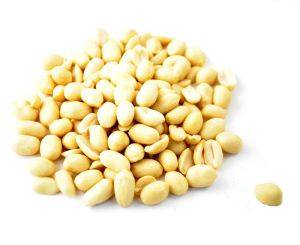Though today peanuts are considered a rather common nut, ancient Peruvians held them in such high esteem that they buried pots of peanuts with their mummified dead to nourish them during their long journey to the hereafter. Peanuts are widely grown throughout the southern United States and about half the national crop is used to make peanut butter. At one stage of its growth, the peanut plant looks very much like the common garden pea plant, which is not at all illogical, since the peanut is actually a legume, not a nut. The nuts (or seeds) have a papery brown skin and are contained in a thin, netted, tan-colored pod. Peanuts are also called groundnuts (as well as earthnuts and, in the South, goobers or goober peas) because, after flowering, the plant bends down to the earth and buries its pods in the ground. Though there are several varieties of peanut, the two most popular are the Virginia and the Spanish peanut. The Virginia peanut is larger and more oval in shape than the smaller, rounder peanuts are sold unshelled and shelled. The former should have clean, unbroken shells and should not rattle when shaken. Shelled peanuts, often available in vacuum-sealed jars or cans, are usually roasted and sometimes salted. Refrigerate unshelled peanuts tightly wrapped for up to six months. Vacuum-packed shelled peanuts can be stored unopened at room temperature for up to a year. Once opened, shelled peanuts should be refrigerated airtight and used within three months. Peanuts are high in fat and rich in protein. The two most popular peanut by-products are peanut butter and peanut oil.
From The Food Lover's Companion, Fourth edition by Sharon Tyler Herbst and Ron Herbst. Copyright © 2007, 2001, 1995, 1990 by Barron's Educational Series, Inc.
Peanuts
Posted In: Food Ingredients
| Author:
Savita
Photo Credit: http://www.netstop.com




